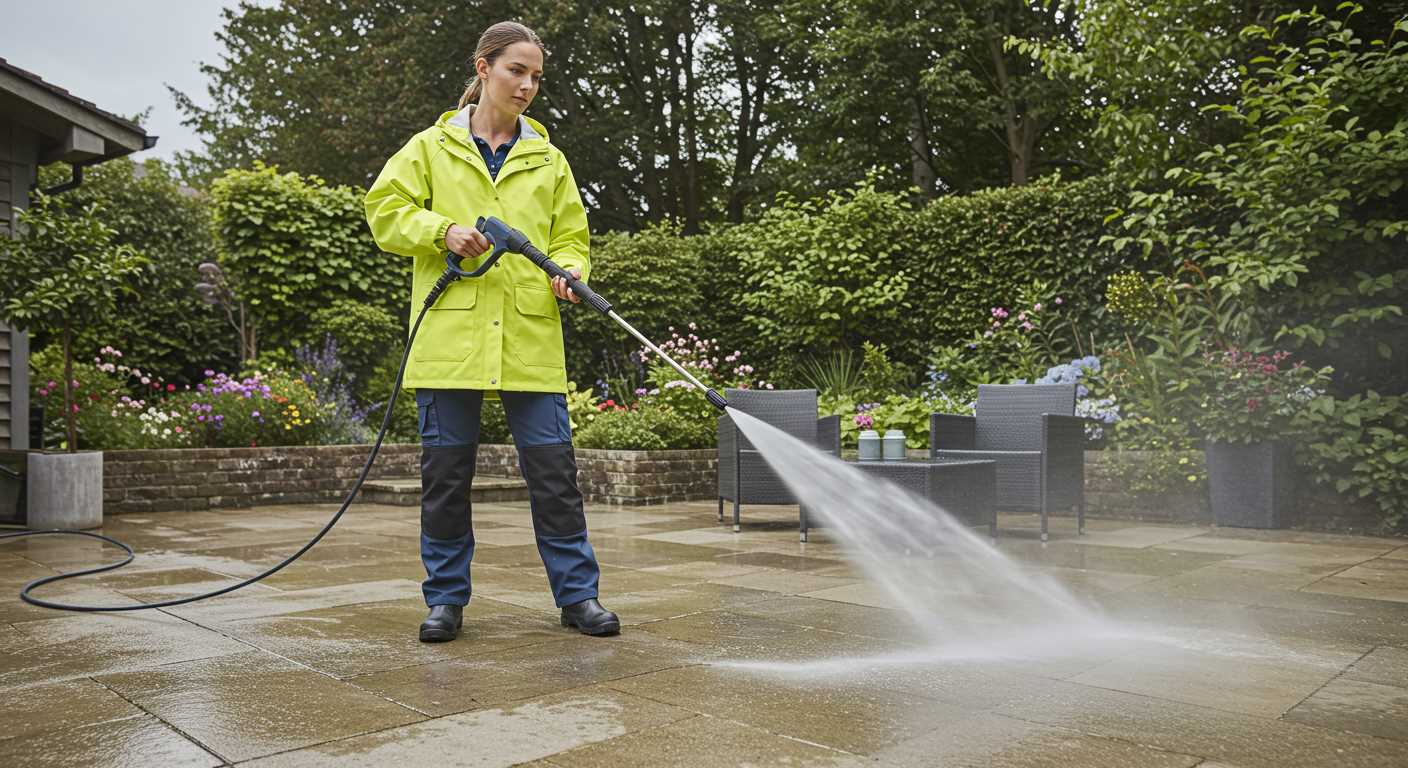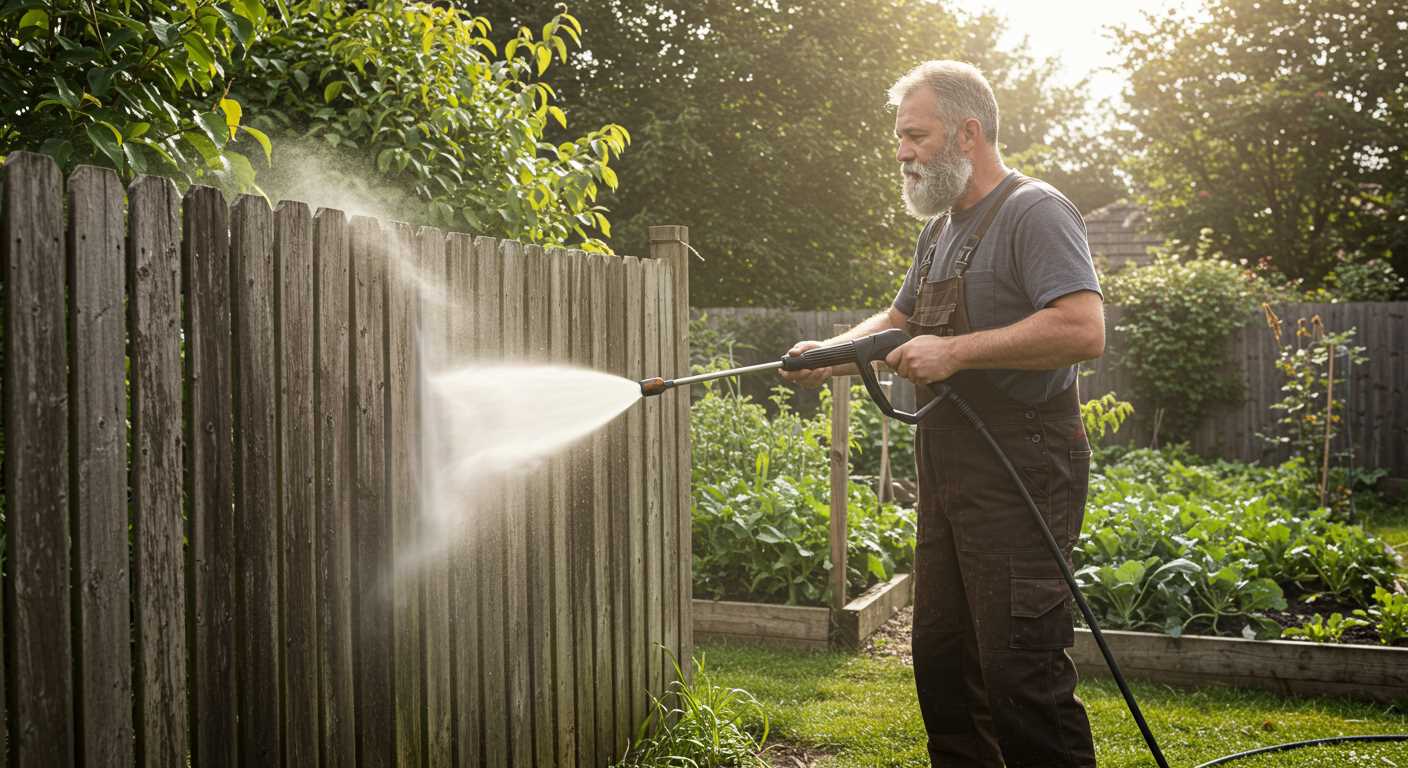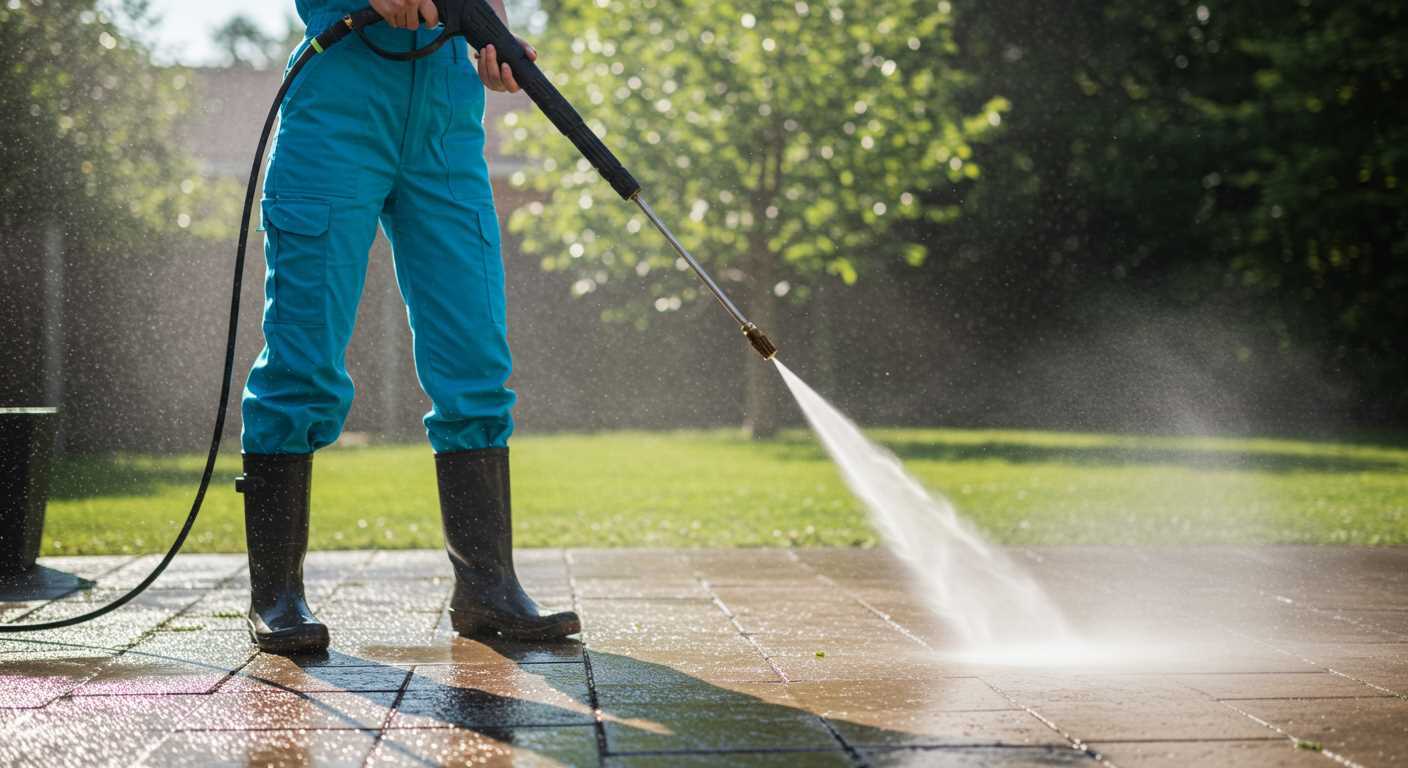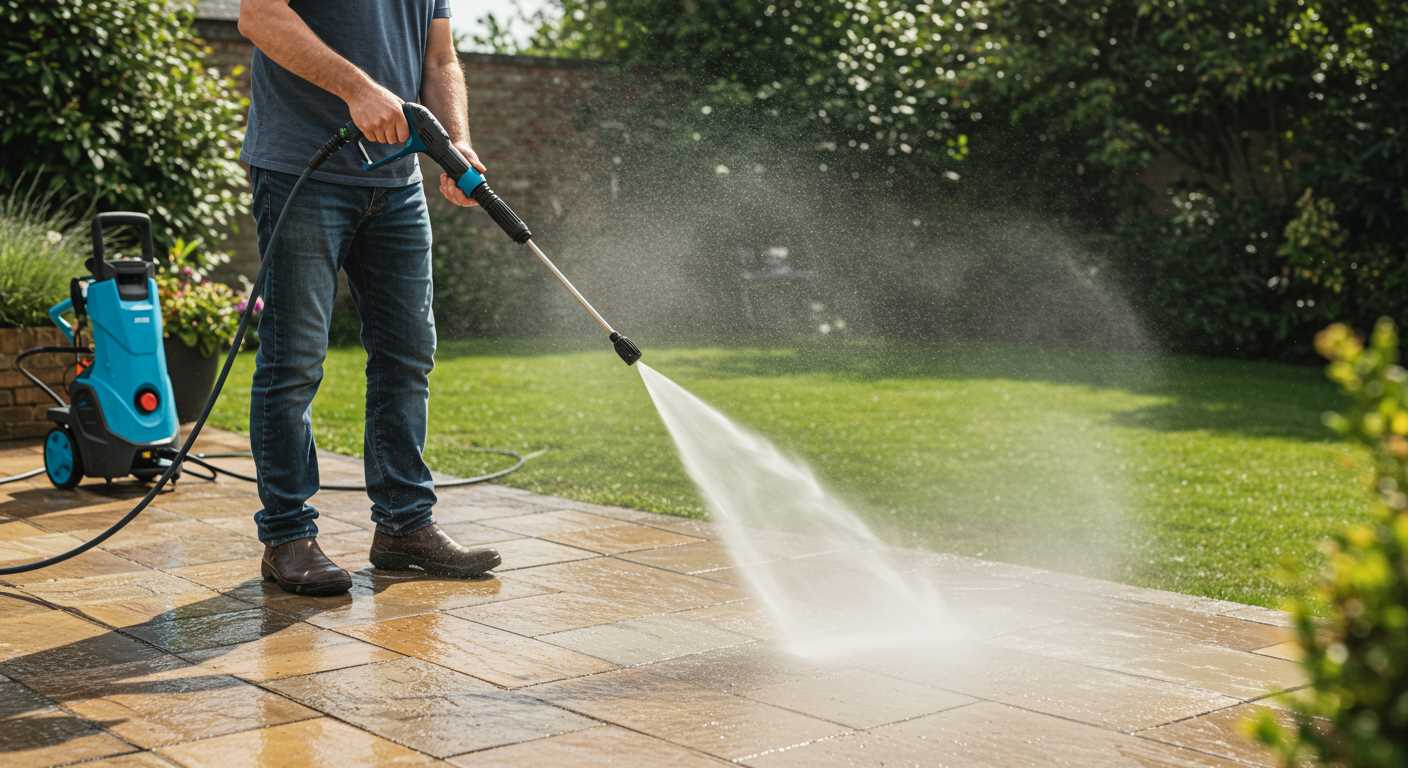

Opting for high-pressure cleaning on a glass structure is generally inadvisable. The intense force can compromise the integrity of the glazing, leading to cracks or leaks over time. If you’re looking to restore the shine and integrity of such installations, alternative cleaning methods are recommended.
Soft washing is a far more suitable approach for this type of surface. This technique involves using a mild detergent mixed with water, applied at low pressure. It effectively removes dirt and algae without the risk associated with high-pressure systems. Additionally, always double-check the condition of seals and joints before cleaning to avoid unintended damage.
For routine maintenance, a gentle scrub with a soft-bristled brush combined with a cleaning solution is exceptionally effective. Regular attention to these surfaces can extend their lifespan and keep them looking pristine without the concerns linked to heavy machinery.
Pressure Cleaning Considerations for Glass Structures
Advising against the high-force cleaning of glass installations is crucial. The risk of shattering or cracking is significant, especially with older panels or those exhibiting structural weaknesses. Instead, a gentler approach, such as soft washing, is recommended to prevent any damage.
Alternative Cleaning Techniques
For optimal results without the hazards associated with forceful spraying, consider using a mild solution of soap and water alongside a soft-bristle brush. A garden sprayer can also effectively apply cleaning agents without the pressure of mechanical systems. Rinsing with a gentle hose stream can suffice for removing residues.
Regular Maintenance Tips

Scheduling routine cleanings will minimise buildup and keep panoramic views clear. Inspecting the seals and fittings regularly helps maintain integrity, avoiding potential leaks or breakage. Implementing a biannual cleaning schedule helps preserve clarity and overall condition without the need for aggressive methodologies.
Understanding the Materials of Your Conservatory Roof
Before tackling maintenance tasks, it’s essential to identify the materials that comprise your structure’s upper surface. Common options include polycarbonate, glass, and acrylic, each with distinct characteristics that influence cleaning methods.
Material Overview

Polycarbonate panels are lightweight and offer good insulation. However, they are prone to scratching, so abrasive cleaning tools should be avoided. Use a soft sponge with mild detergent for an effective clean.
Glass surfaces are more durable and can tolerate a variety of cleaning methods. However, extreme temperature changes may cause issues with seals and frames, leading to potential leaks. A delicate approach with non-abrasive detergents is advisable.
Acrylic is another common choice; while lighter than glass, it can be more susceptible to damage. Like polycarbonate, it requires a gentle touch to prevent scratching. Stick to soft cloths or sponges with mild cleansers.
Comparative Durability Table
| Material | Durability | Cleaning Method |
|---|---|---|
| Polycarbonate | Moderate | Soft sponge, mild detergent |
| Glass | High | Non-abrasive detergent, soft cloth |
| Acrylic | Moderate | Soft cloth, mild cleanser |
Understanding these materials helps tailor appropriate maintenance techniques, ensuring longevity and aesthetic appeal. Always consult the manufacturer’s recommendations for specific guidance related to your installation.
Assessing the Condition of the Roof Before Pressure Washing

Inspect the surface meticulously prior to any cleaning approach. Look for cracks, loose panels, or any signs of degradation that could worsen under high pressure. This preliminary examination is critical to prevent further damage.
Consider the following key points during your assessment:
- Examine for any visible wear, such as faded areas or surface blisters, which may indicate material fatigue.
- Check for moss, algae, or lichen growth. If present, treat these areas with a suitable biocide before cleaning.
- Inspect seals and joints thoroughly for any signs of deterioration or leaks, as high-velocity water can enter these spaces.
- Pay attention to the supporting framework and ensure it is sound and free from rust or corrosion.
- Note the tilt or slope; improper angles can lead to water pooling and require special attention during the cleaning process.
Additionally, assess the surrounding environment. Ensure that there are no overhanging branches or other debris that could complicate or detract from the cleaning. Maintaining a safe and clear area reduces the risk of accidents and improves overall cleaning effectiveness.
Conduct this assessment on a dry day when visual inspection is easiest, and consider taking notes or photos for future reference. After collecting this information, formulate a tailored approach for your cleaning task to ensure the integrity of the structure and its materials.
Choosing the Right Pressure Washer Settings
For optimal cleaning results on delicate surfaces, set the pressure level between 1000 to 1500 PSI. This range is gentle enough to avoid damage while effectively removing dirt and grime.
A wide-angle nozzle (25 to 40 degrees) is preferable for reaching high areas, as it disperses the water over a broader surface, reducing direct pressure while maintaining cleaning efficiency.
Adjust the water flow rate, keeping it moderate to avoid over-saturation. A rate of around 1.5 to 2.0 GPM will ensure a balance between thorough cleaning and protecting the integrity of the structure.
Incorporating a detergent designed for sensitive surfaces enhances the cleaning process. Apply it using a lower pressure setting to avoid splashing and ensure an even coat. Allow the detergent to sit for several minutes before rinsing it away with a wider spray configuration.
Regularly assess and adjust your settings throughout the operation. If stubborn stains persist, increase the pressure temporarily, but revert to safer levels afterwards to protect the surface.
Be mindful of the distance between the nozzle and the surface, maintaining approximately 2 to 3 feet for maximum efficiency. This practice prevents concentrated bursts from causing damage while still providing ample cleaning action.
Techniques for Safely Cleaning a Conservatory Roof

Before starting, ensure all safety precautions are in place. Use non-slip footwear and consider a harness if working at height. I recommend a gentle approach to avoid damage.
1. Gather the Right Equipment
- A soft-bristle brush for preliminary scrubbing.
- A telescopic wand to reach high areas without a ladder.
- A detergent specifically formulated for exterior surfaces.
- A hose with adjustable nozzle for rinsing.
2. Pre-Cleaning Steps

- Remove debris, such as leaves and twigs, using the brush.
- Wash off surface dirt with a gentle spray, keeping the nozzle at least a metre away.
- Apply the cleaning solution with the brush, working in sections to avoid streaking.
Be vigilant about not allowing the detergent to dry on the surface. Rinse each section thoroughly after cleaning to prevent residue buildup.
3. Rinsing Technique
- Use a wide spray pattern to evenly distribute water across the surface.
- Start at the highest point and work downwards to let the water flow off.
- Ensure all soap is removed; any remaining product can lead to stains.
Always inspect for any damage after the cleaning is done. Address any issues immediately to maintain integrity and appearance.
Common Mistakes to Avoid When Using a Pressure Cleaning System
Avoid using the highest pressure setting right away. Start with a lower setting to test the materials. Most surfaces suffer damage from excessive force, leading to cracks or breaks, especially in more delicate structures.
Incorrect Angle and Distance
Maintain a proper distance from the surface being treated. Too close can result in gouging or stripping the materials. Generally, a distance of 2-3 feet is advisable. Adjust the angle to ensure an even clean, directing the spray at a slight downward angle.
Neglecting Safety Gear
Ignoring personal protection can result in injury. Always wear safety goggles, gloves, and sturdy footwear. The cleaning solution or debris may pose risks to skin and eyes. This precaution is necessary for a safe operating environment.
Failing to prepare the area is another common oversight. Clear away any furniture or obstacles beforehand to prevent damage. Additionally, protect nearby plants or surfaces that could be adversely affected by the high force of the water.
Finally, overlooking finish drying completely can lead to streaking. After cleaning, allow the area to dry adequately. Rushing this step might leave residual marks that diminish the clean appearance.
Alternative Cleaning Methods for Conservatory Roofs
For those looking to maintain a clean and clear overhead structure, various methods exist beyond high-pressure equipment. Soft washing offers an effective solution, using low-pressure techniques combined with specially formulated detergents to eliminate dirt and algae without risking damage to the materials.
Another approach is the use of a long-handled brush or sponge paired with a mixture of warm water and mild soap. This hands-on method allows for precise control, ensuring that sensitive areas are treated delicately while offering a thorough clean.
Consider employing a vinegar solution as a natural alternative. Mixing equal parts of white vinegar and water in a spray bottle creates an excellent cleaner to target stubborn stains. After applying, let it sit for several minutes before rinsing thoroughly.
For larger surfaces, a garden sprayer can distribute cleaning solutions evenly, allowing for uniform coverage. This device, combined with a gentle scrubbing technique, can restore clarity to glass panels without the risks associated with more aggressive methods.
Incorporating a specialised cleaning service may also be beneficial. These professionals utilise appropriate equipment and techniques tailored specifically for different types of coverings, ensuring optimal results while safeguarding the integrity of the structure.








